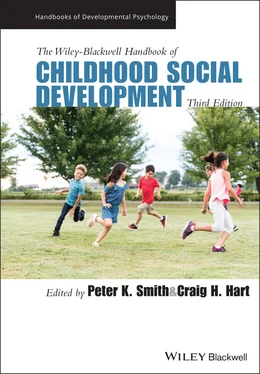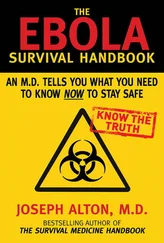5 Bartels, M., van den Oord, E. J., Hudziak, J. J., Rietveld, M. J., van Beijsterveldt, C. E., & Boomsma, D. I. (2004). Genetic and environmental mechanisms underlying stability and change in problem behaviors at ages 3, 7, 10, and 12. Developmental Psychology, 40(5), 852–867.
6 Beaver, K. M. (2008). Nonshared environmental influences on adolescent delinquent involvement and adult criminal behavior. Criminology, 46(2), 341–369.
7 Beitchman, J. H., Davidge, K. M., Kennedy, J. L., Atkinson, L., Lee, V., Shapiro, S., & Douglas, L. (2003). The serotonin transporter gene in aggressive children with and without ADHD and nonaggressive matched controls. Annals of the New York Academy of Sciences, 1008(1), 248–251.
8 Bellivier, F., Szoke, A., Henry, C., Lacoste, J., Bottos, C., Nosten‐Bertrand, M., Hardy, P., Rouillon, F., Launay, J‐M., Laplanche, J‐L., & Leboyer, M. (2000). Possible association between serotonin transporter gene polymorphism and violent suicidal behavior in mood disorders. Biological Psychiatry, 48(4), 319–322.
9 Belsky, J., & Pluess, M. (2009). Beyond diathesis stress: Differential susceptibility to environmental influences. Psychological Bulletin, 135(6), 885.
10 Borinskaya, S., Kal'ina, N., Morozova, I.,Yankovsky, N., Rogaev, E., Marusin, A., Stepanov, V., Puzyrev, V., Faskhutdinova, G., Kutuev, I., Khusnutdinova, E., & Koshechkin, V. (2009). Distribution of the alcohol dehydrogenase ADH1B* 47His allele in Eurasia. American Journal of Human Genetics, 84(1), 89–92.
11 Burt, S. A., McGue, M., Carter, L. A., & Iacono, W. G. (2007). The different origins of stability and change in antisocial personality disorder symptoms. Psychological Medicine, 37(1), 27–38.
12 Burt, S. A., McGue, M., & Iacono, W. G. (2009). Nonshared environmental mediation of the association between deviant peer affiliation and adolescent externalizing behaviors over time: results from a cross‐lagged monozygotic twin differences design. Developmental Psychology, 45(6), 1752–1760.
13 Burt, S. A., & Neiderhiser, J. M. (2009). Aggressive versus nonaggressive antisocial behavior: Distinctive etiological moderation by age. Developmental Psychology, 45(4), 1164–1176.
14 Byrd, A. L., & Manuck, S. B. (2014). MAOA, childhood maltreatment, and antisocial behavior: Meta‐analysis of a gene‐environment interaction. Biological Psychiatry, 75(1), 9–17.
15 Cadoret, R. J., Yates, W. R., Woodworth, G., & Stewart, M. A. (1995). Genetic–environmental interaction in the genesis of aggressivity and conduct disorders. Archives of General Psychiatry, 52(11), 916–924.
16 Caspi, A., Langley, K., Milne, B., Moffitt, T. E., O’Donovan, M., Owen, M. J., Tomas, M.P., Poulton, R., Rutter, M., Taylor, A., Williams, B., & Thapar, A. (2008). A replicated molecular genetic basis for subtyping antisocial behavior in children with attention‐deficit/hyperactivity disorder. Archives of General Psychiatry, 65(2), 203–210.
17 Chiao, J. Y., & Blizinsky, K. D. (2010). Culture–gene coevolution of individualism–collectivism and the serotonin transporter gene. Proceedings of the Royal Society B: Biological Sciences, 277(1681), 529–537.
18 de Villiers, B., Lionetti, F., & Pluess, M. (2018). Vantage sensitivity: A framework for individual differences in response to psychological intervention. Social Psychiatry and Psychiatric Epidemiology, 53(6), 545–554.
19 Deater‐Deckard, K., Pike, A., Petrill, S. A., Cutting, A. L., Hughes, C., & O’Connor, T. G. (2001). Nonshared environmental processes in social‐emotional development: An observational study of identical twin differences in the preschool period. Developmental Science, 4(2), F1–F6.
20 Deater‐Deckard, K., & Plomin, R. (1999). An adoption study of the etiology of teacher and parent reports of externalizing behavior problems in middle childhood. Child Development, 70(1), 144–154.
21 D’Onofrio, B. M., Turkheimer, E., Emery, R. E., Maes, H. H., Silberg, J., & Eaves, L. J. (2007). A Children of Twins study of parental divorce and offspring psychopathology. Journal of Child Psychology and Psychiatry, and Allied Disciplines, 48(7), 667–675.
22 Eley, T. C., Lichtenstein, P., & Moffitt, T. E. (2003). A longitudinal behavioral genetic analysis of the etiology of aggressive and nonaggressive antisocial behavior. Development and Psychopathology, 15(2), 383–402.
23 Elia, J., Glessner, J. T., Wang, K., Takahashi, N., Shtir, C. J., Hadley, D., Sleiman, P. M. A., Zhang, H., Kim, C. E., Robison, R., Gholson, J. L., Bradfield, J. P., Imelinski, M., Hou, C. Frackelton, E. C., Chiavacci, R. M., Sakurai, T., Rabin, C., … Hakonarson, H. (2012). Genome‐wide copy number variation study associates metabotropic glutamate receptor gene networks with attention deficit hyperactivity disorder. Nature Genetics, 44(1), 78–84.
24 Fergusson, D. M., John Horwood, L., & Ridder, E. M. (2005). Show me the child at seven: The consequences of conduct problems in childhood for psychosocial functioning in adulthood. Journal of Child Psychology and Psychiatry, 46(8), 837–849.
25 Ge, X., Conger, R. D., Cadoret, R. J., Neiderhiser, J. M., Yates, W., Troughton, E., & Stewart, M. A. (1996). The developmental interface between nature and nurture: A mutual influence model of child antisocial behavior and parent behaviors. Developmental Psychology, 32(4), 574.
26 Green, H., McGinnity, Á., Meltzer, H., Ford, T., & Goodman, R. (2005). Mental health of children and young people in Great Britain, 2004. Palgrave Macmillan.
27 Harold, G. T., Leve, L. D., Barrett, D., Elam, K., Neiderhiser, J. M., Natsuaki, M. N., Shaw, D. S., Reiss, D., & Thapar, A. (2013). Biological and rearing mother influences on child ADHD symptoms: Revisiting the developmental interface between nature and nurture. Journal of Child Psychology and Psychiatry, 54(10), 1038–1046.
28 Hawi, Z., Cummins, T., Tong, J., Johnson, B., Lau, R., Samarrai, W., & Bellgrove, M. (2015). The molecular genetic architecture of attention deficit hyperactivity disorder. Molecular Psychiatry, 20(3), 289–297.
29 Haworth, C. M., Davis, O. S., & Plomin, R. (2013). Twins Early Development Study (TEDS): A genetically sensitive investigation of cognitive and behavioral development from childhood to young adulthood. Twin Research and Human Genetics, 16(1), 117–125.
30 Hirschhorn, J. N., & Daly, M. J. (2005). Genome‐wide association studies for common diseases and complex traits. Nature Reviews Genetics, 6(2), 95–108.
31 Hudziak, J. J., Copeland, W., Stanger, C., & Wadsworth, M. (2004). Screening for DSM‐IV externalizing disorders with the Child Behavior Checklist: A receiver‐operating characteristic analysis. Journal of Child Psychology and Psychiatry, 45(7), 1299–1307.
32 Iossifov, I., O'Roak, B. J., Sanders, S. J., Ronemus, M., Krumm, N., Levy, D., Stessman, H. A., Witherspoon, K., Vives, L., Patterson, K. E., Smith, J. D., Paeper, B., Nickerson, D. A., Dea, J., Dong, S., Gonzalez, L. E., Mandell, J. D., Mane, S. M., Murtha, M. T., … Wigler, M. (2014). The contribution of de novo coding mutations to autism spectrum disorder. Nature, 515(7526), 216–221.
33 Jaffee, S. R., Caspi, A., Moffitt, T. E., Dodge, K. A., Rutter, M., Taylor, A., & Tully, L. A. (2005). Nature X nurture: Genetic vulnerabilities interact with physical maltreatment to promote conduct problems. Development and Psychopathology, 17(1), 67–84.
34 Kendler, K. S., & Baker, J. H. (2007). Genetic influences on measures of the environment: A systematic review. Psychological Medicine, 37(5), 615–626.
35 Kendler, K. S., Jacobson, K., Myers, J. M., & Eaves, L. J. (2008). A genetically informative developmental study of the relationship between conduct disorder and peer deviance in males. Psychological Medicine, 38(7), 1001–1011.
36 Kerr, D. C. R., Leve, L. D., Harold, G. T., Natsuaki, M. N., Neiderhiser, J. M., Shaw, D. S., & Reiss, D. (2013). Influences of biological and adoptive mothers' depression and antisocial behavior on adoptees' early behavior trajectories. Journal of Abnormal Child Psychology, 41(5), 723–734.
Читать дальше












